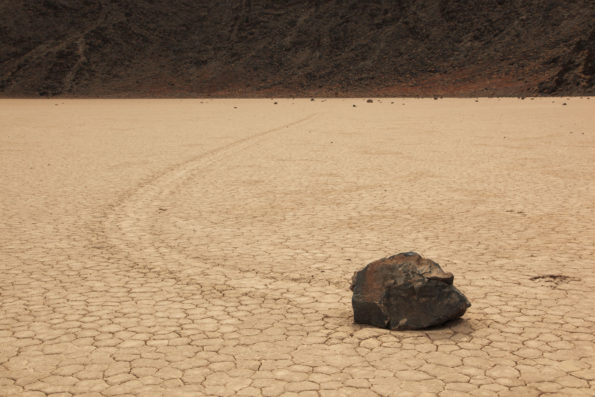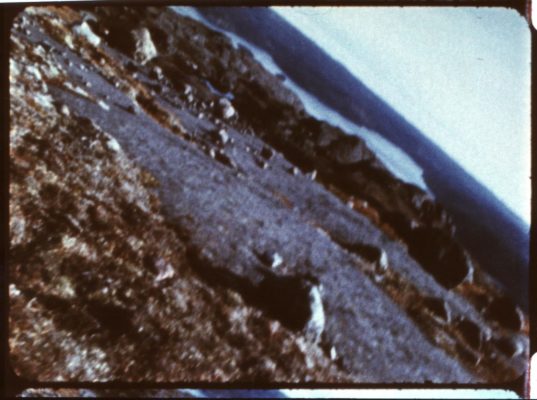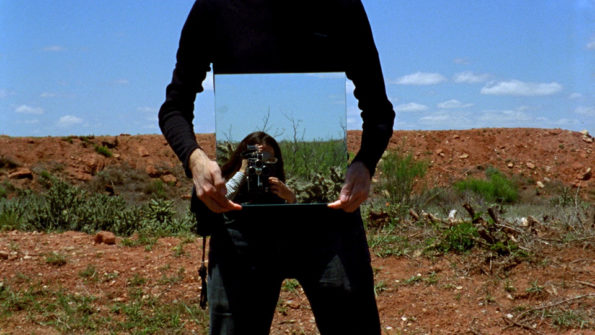Search
To search for an exact match, type the word or phrase you want in quotation marks.
A*DESK has been offering since 2002 contents about criticism and contemporary art. A*DESK has become consolidated thanks to all those who have believed in the project, all those who have followed us, debating, participating and collaborating. Many people have collaborated with A*DESK, and continue to do so. Their efforts, knowledge and belief in the project are what make it grow internationally. At A*DESK we have also generated work for over one hundred professionals in culture, from small collaborations with reviews and classes, to more prolonged and intense collaborations.
At A*DESK we believe in the need for free and universal access to culture and knowledge. We want to carry on being independent, remaining open to more ideas and opinions. If you believe in A*DESK, we need your backing to be able to continue. You can now participate in the project by supporting it. You can choose how much you want to contribute to the project.
You can decide how much you want to bring to the project.

Rocks are not inert, they move. They modify their structure and location, melting, becoming eroded or adapting to new forms over extremely long periods of time. Minerals, fossils and stones explain the history of Earth by marking the morphological changes throughout its existence. The reliefs in continents and oceans are rocky landscapes that testify to the past; they are an open book that explains the bulk of the transformation of a time, the geological one, which covers the almost 4.6 billion years of history of the Blue Planet. A science such as geology explores, therefore, the inner and outer shape of the globe, its matter, its alterations and its current state. It studies the link that the structure of planet Earth establishes with deep time [i].
Theoretically, a medium such as cinematography should be able to represent the visual and temporal essence of geology in a plausible way. After all, film is a means to capture images and sounds in order to display them according to their appropriate length. However, the audiovisual medium encounters significant obstacles when it comes to representing geological changes convincingly: movement and time. If geological movement is unnoticeable to the human being, time is practically unrepresentable in filmic terms. Relief and volumetry also escape the two-dimensional domain of all audiovisual work. It is worth asking, therefore, how mediums such as film or video can explain this transformation of millions of years. How can motion picture artists elucidate mysteries about the Earth’s crust? What kind of audiovisual proposals reveal their future convincingly? Beyond orthodox documentary cinema —an explanatory, instructive, often redundant voice-over—, it is pertinent to question which proposals shed light on the geological problems within experimental cinema and essayistic video creation.
Establishing synergies between the technological means of reproduction of images and the geological field, we find aesthetic considerations that suggest terrestrial beauty in itself [ii]. In the film and videographic art there are several works that perform geological analysis linking theoretical considerations with poetic subtleties. Consciously assuming the role of the medium chosen in the representation, various artists solve their pieces by placing themselves in the limit between essayistic and pedagogical, figurative and abstract, analytical and metaphorical. These are proposals that transmit subtle instances not free from complexity.

In Sailing Stones (2011, picture), recorded by Adrien Missika on Racetrack Playa, a set of stones placed along a completely dry lake is shown, surrounded by dolomitic cliffs, near the legendary Death Valley in California. For eleven minutes, some boulders that have reached their position are documented leaving behind a sinuous line on the ground. The profound slowness with which the rocks change locations and the difficulty of perceiving that peacefully enigmatic path recalls temporary titles such as the one in the composition Organ²/ASLSP (As Slow as Possible) (1987), by the American musician John Cage [iii]. Similarly, the work plans are expanded, sculpting a duration that extends beyond the usual. A temporary suspension that denotes a frustration is added to the static nature of the shots: the impossibility of witnessing any sign of movement [iv]. Laura Kraning chooses another methodology to document a similar desert area in Meridian Plain (2016). An accelerated montage of static images captured by cameras tracks monochromatic textures of unidentifiable stones and rocks. Creating a topographic map of a distant landscape, put together with zenithal photographs taken from the internet, requires a wide variety of views for a completely virgin natural setting [v]. His progressive frenzy seems to be inspired by projects of artists like Michael Snow or Gary Hill, especially in the most hyperactive segments in films such as La Région Centrale (1971, picture below) or Axis(1975). Li: The Patterns of the Nature (2007) by John N. Campbell starts from the Chinese term LI, referring to the order and intelligence that underlies in nature, to reflect the richness of its organic forms. Microscopic lenses, long time slots and other unusual filming techniques collect seasonal cycles diachronically. In another work by Campbell titled Crystal Growth in Polarized Light(2017), the filmmaker captures the formation of minerals and crystals like those that were once filmed by the American Lillian Schwartz —Bagatelles (1977)— and the French Jean Painlevé – Transition in Liquid Crystals (1978) [vi].

There are other audiovisual works with artistic features where the artist’s body makes an appearance, modifying a profilmic space characterized by geological predominance.Within a Stone’s Throw (2012) by Cecilia Condit is a three-screen video installation which displays images of natural Irish sceneries recorded in fixed shots. The wandering of the artist, interacting with the scale of the stones and their dispositions within the frame, are performative trajectories through rocky enclaves. The spiritual part underlies among symbolic and mythological background situations. Amarillo Ramp(2017) by Sabine Gruffat and Bill Brown also includes performances of human bodies. It begins with a quote from the writer J. G. Ballard that refers to overcoming the limits of space-time coordinates [vii]. Gruffat and Brown describe the latest earthwork by artist Robert Smithson in a poetic essay that improvises mirrored games of light reflections. They are playful interventions guided by the electric windings of Sonic guitarist Lee Ranaldo —whose song Amarillo Ramp (For Robert Smithson) is playing (2000, picture below)—. According to the two filmmakers, Smithson’s work is an indication of Anthropocene —a time that follows the Holocene— a term introduced by the ecologist Eugene Stoermer and scientist Paul Crutzen that indicates the geological change marked by the impact of the human being on the Earth’s ecosystem. Casting a Glance(2007, cover picture) by James Benning suggests another interpretation of this transformation, contemplating the Spiral Jetty (1970) by Robert Smithson over several decades. This large spiral of mud located in the north of Salt Lake in Utah is, according to the artist’s words, “an immobile cyclone.” Benning visits it regularly, checking as it comes to the surface in 2004 after being underwater for thirty years. Sixteen long shots of trips taken between 1970 and 2007 visualize the meteorological changes and the process of erosion of basalt rocks that make up the most recognized Land Art work.

In a scene from Traveling Fields (2010), the Englishwoman Inger Lise Hansen focuses on the ruins of an unfinished building that, due to its calculated disposition, evokes the alignment of Carnac’s menhirs in Brittany [viii]. This slow lateral tracking shot, made upside down from right to left, increases its peculiarity by the mystery that an abandoned set of concrete columns conjures. Putting together the chosen area —the Kola peninsula in northern Russia— and using time slots that light the scene intermittently, the artist presents an altered recording of a terrain vague. This area full of bends reveals an entropic landscape that suggests the possibility of giving a new meaning to the ecological conscience. The project Medium Earth (2013) by London-based artists, The Otolith Group, has the same problems. In this project the seismic part is dissected through an audiovisual test that, by taking the Tohoku earthquake as a starting point, draws a prophetic itinerary across the tectonic movement of the geological crust of California. As they point out on their website, “the desire to evoke the hidden substrata of the planet gives way to a morphological interpretation of the face of the earth” [ix]. And then they introduce methodologies that listen to the loud landscape of deserts, translate the calligraphies of the fault cracks and decode the writing of the stones.
In general, all the audiovisual practices reviewed here suggest the triviality of the human being given the space-time magnitude of planet Earth. Any type of human intervention on land will turn into ruins sooner or later, becoming a monument for the future. It is no coincidence that Robert Smithson, while reflecting on time, art and landscape, quoted Russian writer Vladimir Nabokov when he states that “the future is but the obsolete in reverse” [x]. The videographic pieces mentioned in this text are only a small representation of an endless number of titles that capture the fascination of artists for geology. The elusive thing about this theme, its resistance to any kind of audiovisual delimitation, is still a good enough reason to continue investigating its properties, whether human appearance is included or not. The seemingly static nature of stones and boulders paradoxically reveals a changing background where phenomenology is overcome by the concept of deep time. Because in terms of geology, artistically conveyed, epistemological limits can only express the tendency to metamorphosis and alteration, validating the expression of the French chemist Antoine-Laurent Lavoisier, who, in 1785, said that “matter is neither created nor destroyed, only transformed” [xi].
[i] Scottish geologist James Hutton (1726–1797) introduced the scientific concept of ‘deep time’. In Principles of Geology (1830-1833) the British geologist Charles Lyell codified the notion of deep time proving that the persistent action of ordinary causes originates all geological facts.
[ii] Any well-illustrated geology book is an invitation to interpreting pictures of igneous, metamorphic or sedimentary rocks as visual abstractions which, due to their formal characteristics (emphasis on texture, all over composition, unintelligibility of the scale, relative absence of figuration), refer to paintings of abstract expressionism, informalism or other movements of the pictorial practice of absorption. Similarly, photographers such as Edward Weston or Albert Renger-Patzsch take stones —blind or not— as models to develop artistic proposals of the new objectivity, which can be studied under the sign of petrology. On the other hand, certain practices in the sound field, such as those developed by the Englishman Chris Watson, fully involve the terrestrial passing of time. Seismic movements and volcanic eruptions can be recorded as loud landscapes recordings in a more or less objective way.
[iii]Organ²/ASLSP (As Slow as Possible) (1987) is a piece of music that presents the slowest and longest musical performance ever performed. As Slow as Possible was also the title chosen by curators Alexandra Laudo and Jesús Vilamajó to organize a showing of contemporary art at the Embarrat de Tàrrega exhibition in 2017.
[iv] A Scratch session of experimental film took place in Paris in January 2016, titled Images Dusts: Telluric Strengths. It included Sailing Stones and other works such as the research of Sun Tunnels (1978) by the American artist Nancy Holt.
[v] This film was one of those included in the Voyages Elsewhere session that closed the Edge of Frame exhibition, at the Close-Up Cinema in London, dedicated to experimental animation cinema, in March 2018.
[vi] Nirvana Alchemy Film (2007) by Jennifer West does not represent minerals but adds thermal water soaked in lithium and other alchemical substances on 16 mm celluloid. The chemical action on the emulsion alters autobiographical films turned into decomposing divertimenti.
[vii] “The Amarillo Ramp I take to be both jetty and runway, a proto-labyrinth that Smithson hoped would launch him from the cramping limits of time and space into a richer and more complex realm.” Ballard, J. G. ‘Robert Smithson as Cargo Cultist’ in Conley, Brian and Joe Amrhein (Ed.) Robert Smithson: A Collection of Writings on Robert Smithson on the Occasion of the Installation of ‘Dead Tree’ at Pierogi 2000.Brooklyn, NY: Pierogi 2000, 1997.
[viii] According to Francesco Careri, Carnac’s menhirs have been studied as a great stone calendar thanks to its particular orientation. Careri, Francesco, Walkscapes.Walking as an aesthetic practice. Barcelona: Gustavo Gili, 2014. 2nd edition. p. 52.
[ix] http://otolithgroup.org/Website last accessed in July 2018.
[x] Smithson, Robert. “Entropy and the New Monuments” (1966) in Flam, Jac, (Ed.) Robert Smithson. The Collected Writings. Los Angeles: University of California Press. 1996. p. 11.
[xi] Other videographic works that have been taken into consideration for the writing of this text are: La vida de las piedras (1996-2006) by Clemente Calvo, Piedras (2012) by Mercedes Mangrané, The Artist and the Stone (2014) by Matteo Guidi and Giulina Racco, and Stone and Bird (2017) by the Volga group.

Albert Alcoz is intrigued by film experimentation and videographic exploration, as well as the singular ways of configuring sound through moving images. He writes about the cinematographic medium and the visual arts since he started the Visionary Film website in 2006. He organizes projections in self-managed spaces and collaborates with legitimated art centers. From time to time he films, records or edits his own pieces, alternating found footage, structural cinema, cameraless cinema, expanded cinema, video clip or documentary practice. It is not enough to pay the rent, but teaching is.
"A desk is a dangerous place from which to watch the world" (John Le Carré)